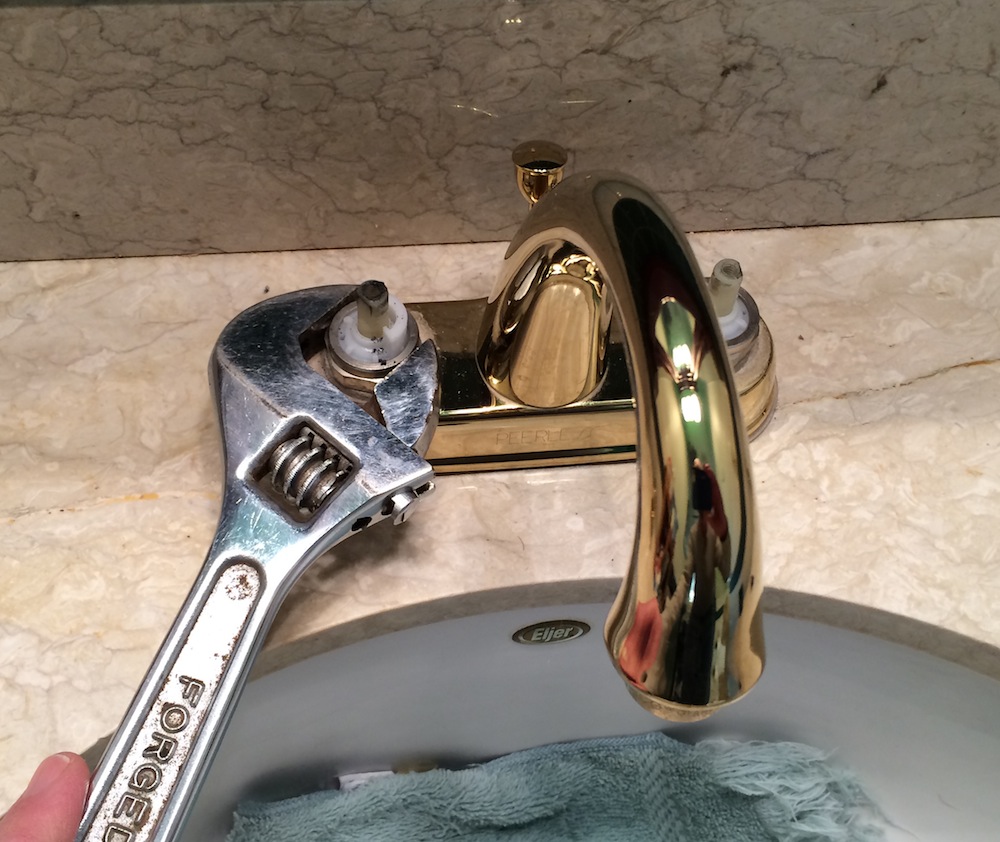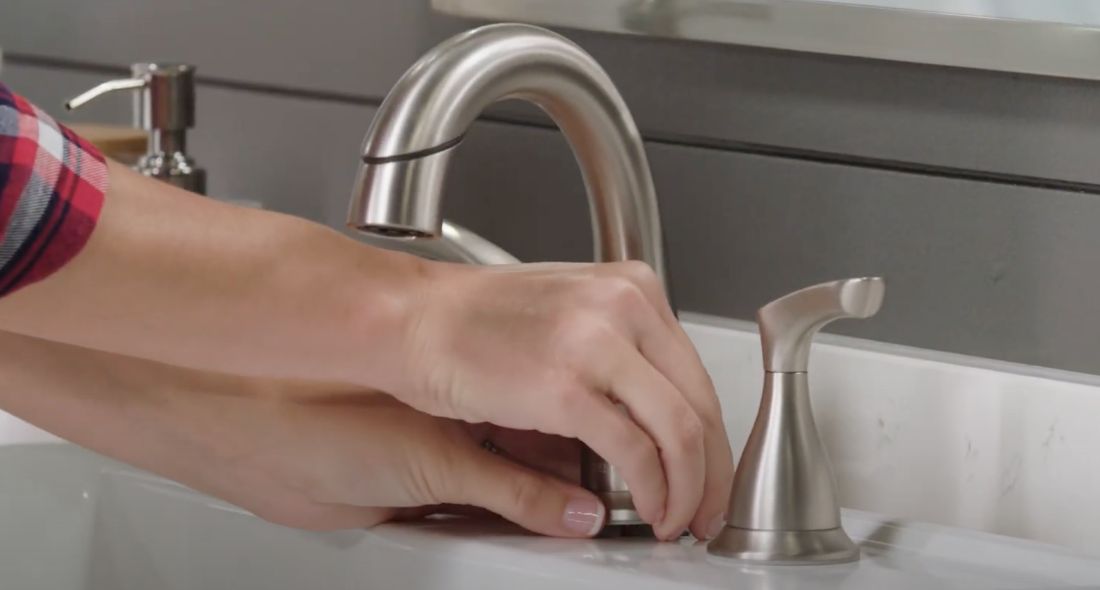The writer is making a number of good points on Leaky Faucets: Why They Happen & What to Do About Them as a whole in this content beneath.

Trickling taps could seem like a minor hassle, however their effect surpasses simply the annoyance of the sound. From wasting water to incurring unnecessary financial costs and health threats, ignoring a trickling tap can bring about various consequences. In this article, we'll delve into why it's crucial to resolve this typical home issue promptly and properly.
Waste of Water
Environmental Impact
Trickling faucets add dramatically to water waste. According to the Environmental Protection Agency (EPA), a single tap dripping at one drip per secondly can squander greater than 3,000 gallons of water annually. This not just stress water sources but additionally affects ecological communities and wildlife depending on them.
Step-by-Step Guide to Dealing With a Dripping Faucet
Tools Required
Before trying to fix a leaking tap, collect the required devices, consisting of a flexible wrench, screwdrivers, replacement parts (such as washing machines or cartridges), and plumber's tape.
Usual Tap Issues and Their Solutions
Identify the type of faucet and the particular problem creating the drip. Usual troubles include worn-out washers, corroded valve seats, or faulty O-rings. Describe manufacturer instructions or on-line tutorials for detailed support on repair services.
Financial Prices
Boosted Water Expenses
Beyond the environmental impact, dripping taps can blow up water expenses significantly. The built up wastage over time converts right into higher utility expenses, which can have been prevented with timely fixings.
Prospective Residential Property Damage
Moreover, extended dripping can bring about damage to components and surfaces bordering the faucet. Water buildup can cause staining, rust, and also structural concerns if left unattended, leading to additional repair work prices.
Health Worries
Mold And Mildew and Mildew Growth
The consistent presence of wetness from a trickling faucet creates a suitable environment for mold and mildew growth. These fungis not just endanger interior air quality but also position health and wellness threats, specifically for people with respiratory conditions or allergies.
Waterborne Diseases
Stagnant water in dripping taps can come to be a breeding place for microorganisms and various other microorganisms, increasing the risk of waterborne illness. Pollutants such as Legionella bacteria thrive in stationary water, possibly resulting in serious illnesses when consumed or inhaled.
DIY vs. Specialist Repair service
Benefits and drawbacks of DIY Repair
While some might attempt to take care of a dripping faucet themselves, do it yourself repair work feature their own collection of difficulties. Without correct understanding and devices, DIY efforts can exacerbate the problem or bring about incomplete repair services, prolonging the issue.
Advantages of Employing a Specialist Plumber
Hiring an expert plumber makes sure that the underlying cause of the dripping faucet is attended to properly. Plumbings possess the know-how and tools to detect and fix tap concerns efficiently, saving time and lessening the danger of further damage.
Environmental Obligation
Private Contribution to Conservation
Taking responsibility for dealing with trickling taps lines up with wider efforts toward water preservation and ecological sustainability. Every individual's actions jointly make a considerable effect on preserving priceless sources.
Sustainable Living Practices
By focusing on timely repairs and embracing water-saving practices, people contribute to lasting living methods that benefit both existing and future generations.
Preventive Measures
Routine Maintenance Tips
To avoid dripping faucets, perform routine upkeep such as cleaning aerators, checking for leaks, and replacing damaged parts immediately. Additionally, think about mounting water-saving devices or upgrading to extra efficient fixtures.
Value of Prompt Services
Addressing leaking taps as quickly as they're seen prevents further water waste and prospective damage, ultimately saving both water and money in the long run.
Effect On Residential Property Worth
Assumption of Well-Maintained Building
Keeping a property in good condition, consisting of resolving upkeep problems like dripping faucets, boosts its viewed value and charm among potential customers or occupants.
Influence on Resale Value
Properties with properly maintained plumbing components, including taps, command higher resale worths in the realty market. Addressing leaking faucets can add to a favorable perception throughout residential property inspections and arrangements.
Final thought
Addressing a leaking tap goes beyond simple ease; it's a vital action towards conserving water, minimizing economic costs, and protecting health and wellness and building. Whether through DIY repair work or expert help, acting to take care of leaking taps is a little yet impactful method to advertise accountable stewardship of sources and add to a healthier, much more sustainable future.
How to Fix a Leaky Faucet: Step-by-Step Repair Guide
A leaky faucet may seem like a simple annoyance, but if it's not fixed promptly, that leak could cost hundreds to potentially thousands. From water damage to mold, mildew, and high water bills, even a tiny leak can be catastrophic if left unattended. Damage like this can even affect the overall value of your home, so it's important to take the right approach for leaky faucet repair. You may need the help of a plumber in some cases, but we've got a few tips you can try on how to fix a leaky faucet before calling the pros.
Four Faucet Types
When you're learning how to fix a leaky faucet, the first step is knowing what kind of faucet you're working with! There are four common types.
Cartridge Faucets
Cartridge faucets come in one- or two-handled varieties. In one-handled cartridge faucets, hot and cold water combines in a single cartridge. In the two-handled versions, hot and cold water are controlled separately and mixed in the faucet.
Ball Faucets
Ball faucets have a single lever you push up and down to adjust the pressure and rotate to change the temperature. A slotted metal ball controls the amount of water allowed into the spout.
Compression Washer Faucets
They're the oldest type of faucet, but they're still used in many homes — especially older ones. Compression faucets have two separate handles that, when turned, raise or lower the washer that seals a water valve. This valve stops water from flowing through the faucet when it is turned off.
Disc Faucets
Disc faucets rarely need to be repaired due to their maintenance-free design. The water flow is controlled by two discs — the upper one raises and lowers against a fixed lower disc, creating a watertight seal. If your disc faucet starts leaking, you may need to replace the seals or clean residue buildup from the inlets.
Fixing a Leaky Faucet
Step 1: Turn Off the Water
Whether you're learning how to fix a leaky bathtub faucet or how to fix a leaky kitchen faucet, always turn off the water supply to your working area when you're fixing a leak. The last thing you want is a flood added to your list of things to fix.
Look for the shutoff valves below your sink or around the tub and turn them clockwise to stop the water flow. If your faucet doesn't have shutoff valves, you may need to turn off the water for the whole house. Check to make sure it's off by turning the faucet on. If nothing comes out, you're ready to start the repair.
Step 2: Take Apart the Faucet
How you disassemble your faucet depends on the type of fixture you have. You can use a flathead screwdriver to remove the caps on top of the handle or handles for cartridge and compression faucets. Inside, you should see handle screws. Unscrew these with a screwdriver to remove the handle.
Disc- and ball-style faucets will typically have an inlet screw near the handle, and removing that will reveal the interior of the faucet.
Detach the Valve Stem
For cartridge- and compression-style faucets, you'll see the inner valve stem or cartridge once you remove the faucet handles. If you have a compression faucet, unscrew the brass valve stem. If you have a cartridge faucet, pull out the cartridge. If your cartridge has been in place for a while, it may require some tools or extra force to remove it due to mineral deposits.
Examine and Replace Parts
Once you've removed the parts, check them out to confirm what needs to be replaced. You may see corroded rubber washers, O-rings, stems, or cartridges. On a ball-style faucet, check the seats and springs for damage.
If you need to repair a leaky disc faucet, check the inlet and seals on the lower disc.
Once you determine what parts must be replaced, visit your local hardware store. Bring the damaged parts with you to ensure you can purchase the correct components to replace them.
Clean Valves and Faucet Cavity
If you've removed a stem or cartridge, you may notice mineral buildup in the faucet's threads. Use white vinegar to clean the valve seat by soaking it for a few minutes, then scrub it away with a soft toothbrush and rinse with warm water. You can also clean the interior of the faucet in the same way.
Reassemble the Faucet
Once your faucet is cleaned and the required parts have been replaced, it's time to reassemble it. Put the pieces back together and slowly turn the water supply back on. Doing this slowly is crucial because too much initial water pressure can damage the new hardware you've just installed.
https://homewarranty.firstam.com/blog/how-to-fix-leaky-faucet

As a serious person who reads about Should I Repair or Replace a Leaky Faucet?, I imagined sharing that information was really useful. Enjoyed reading our posting? Please quickly share it. Help other people check it out. Thank you for taking the time to read it.